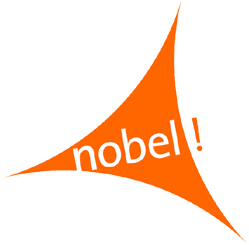

Monday - April 14, 2008
SLAC Today is
available online at:
http://today.slac.stanford.edu
In this issue:
Timing the Science of the LCLS
Bike to Work Day is Coming May 15th
Nobel Tribute Exhibition in San Jose
Undergraduate Summer Exchange Program in Italy
 |
 |
|
Monday - April 14, 2008 |
|
The group at Berkeley Lab that developed the timing system for the LCLS. From
the left, they are: Russell Wilcox, Gang Huang, Larry Doolittle
[seated], John Byrd, Alex Ratti and John Staples. (Click image for larger version.)
Timing the Science of the LCLSThe Linac Coherent Light Source (LCLS) will be the world's first free-electron laser to produce ultra-fast, hard X-rays. The machine's design calls for nearly two miles of linear accelerator coupled to long arrays of undulator magnets to pull off this achievement. But because of the length of the machine, the LCLS faced a unique new set of challenges in precisely synchronizing the components that must work together at different ends. SLAC turned to Lawrence Berkeley National Lab, which solved the problem with an innovative optical synchronization system. The collaboration, part of a long history of cooperation between SLAC and Berkeley Lab, is essential for the success of the LCLS, said Bill White, head of SLAC's Laser Group. "If we had started from ground zero and tried to develop this [system] in-house, we wouldn't have been able to do it in time." When complete, the LCLS will produce pulses of X-rays less than 100 femtoseconds long, or 100 quadrillionths of a second. Much as a strobe light can "freeze" the motion of a bullet in flight, and because the wavelength of the hard X-rays is so small, ultra-fast pulses from the LCLS will freeze the activities and motions of individual atoms. Images made this way can be strung together, allowing scientists to construct movies showing how the properties of matter evolve on atomic size and time scales. Read more... |
||
|
|
||
Bike to Work Day is Coming May 15th
On Your Mark, Get Set, Pedal! May 15th marks the return of Bike to Work Day. Last year SLAC had close to 80 participants stop by the SLAC energizer station—a place for cyclists to grab freebies, beverages and snacks. This year, the station will again be set up at the lab's Sand Hill Road main entrance from 6:30 to 9 a.m. on the 15th. Die-hard cyclist and SLAC coordinator of the event Rick Challman is looking forward to another record-breaking turnout. "It's always been about doing what you can," Challman said. "If people want to drive half of their commute, and then ride—that's great." This year Bike to Work Day will be better than ever. In addition to the energizer station, a company and team bike challenge as well as a bike commuter of the year award will round out the excitement of National Bike Month. Interested in seeing how many calories you'll burn, money you'll save and pounds of pollutants you'll keep out of the atmosphere? Check out the Bike Commute Calculator on the Bike to Work Day website. For general information on alternate commuting, check out the Bay Area Bikes and Peninsula Traffic Congestion Relief Alliance website. Correction:
|
Nobel Tribute Exhibition in San Jose An exhibition called "Nobel Voices: Celebrating 100 Years of the Nobel Prize," and its companion website, are celebrating the colorful personalities and fascinating lives of Nobel laureates through photographs, interviews and other interactive features. The exhibition runs through May 23rd at the Tech Museum of Innovation in San Jose, and features SLAC Nobel laureates Burton Richter (Physics, 1976), Richard Taylor (Physics, 1990) and Martin Perl (Physics, 1995). Nobel Voices is a joint project of the Smithsonian Institution's Lemelson Center, the Deutches Museum Bonn and the National Portrait Gallery. Undergraduate Summer Exchange in ItalyCalling all undergraduates with a background in physics, engineering or computing studies, plus a desire to combine research and travel! The Summer Exchange Program offers the opportunity to work directly with scientists in Italy as well as to absorb the country's rich culture. Applicants must be at least in their third year, and the application deadline is April 20, 2008. The exchange, sponsored by the U.S. Department of Energy (DOE) Office of Science and the National Institute for Nuclear Physics of Italy (INFN), sends U.S. undergraduate students to Italy for 8 to 10 weeks to work with scientists, and Italian students have similar opportunities here. Potential research areas include particle physics, astro-particle physics, nuclear physics, theoretical physics and detector physics. Information about the Italian program may be found here. Information about the DOE program at SLAC may be found here. For additional information, contact Harvey Lynch or call (650) 926-3691. |
Events
Access (see all)Announcements
|
| | ||
|
|
||
 <%
Response.AddHeader "Last-modified", getArticleDate()
'Response.AddHeader "Last-modified","Mon, 01 Sep 1997 01:03:33 GMT"
'Monday, December 06, 2010
%>
<%
Response.AddHeader "Last-modified", getArticleDate()
'Response.AddHeader "Last-modified","Mon, 01 Sep 1997 01:03:33 GMT"
'Monday, December 06, 2010
%>View online at http://today.slac.stanford.edu/. |
||